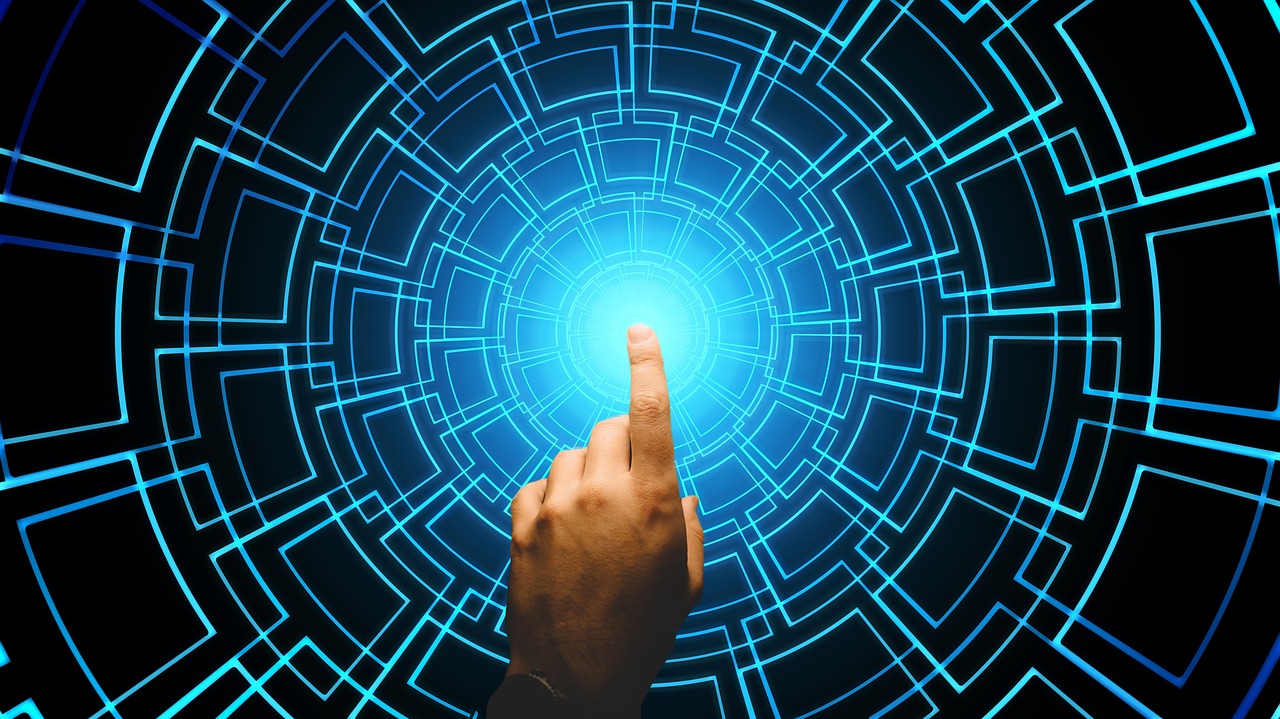Computer vision, once a futuristic fantasy, is now a powerful reality transforming industries from healthcare to manufacturing. This technology empowers computers to “see” and interpret the world around them, enabling automation, improved accuracy, and entirely new possibilities. Whether you’re a business leader exploring new technologies or a tech enthusiast eager to learn, this comprehensive guide will illuminate the fascinating world of computer vision.
What is Computer Vision?
Defining Computer Vision
Computer vision is a field of artificial intelligence (AI) that enables computers to understand and interpret images and videos. It draws upon various disciplines, including image processing, pattern recognition, and machine learning, to allow machines to “see” in a way that mimics human vision. However, unlike humans, computer vision systems can process information at speeds and scales that are simply impossible for us.
How Computer Vision Works: A Simplified Explanation
The core process of computer vision involves several key steps:
- Image Acquisition: The system captures an image or video using a camera or sensor.
- Image Processing: The image is pre-processed to enhance its quality, remove noise, and prepare it for analysis. This may involve adjusting contrast, brightness, and color balance.
- Feature Extraction: Relevant features are extracted from the image. These features could include edges, corners, shapes, and textures. Algorithms like edge detection (e.g., Canny edge detector) or feature descriptors (e.g., SIFT, SURF) are used here.
- Object Detection & Classification: Machine learning models, often deep learning models like Convolutional Neural Networks (CNNs), are trained to identify and classify objects within the image based on the extracted features. The model compares detected features against a database of known objects.
- Interpretation & Decision Making: Based on the identified objects and their relationships, the system makes a decision or takes an action. For example, a self-driving car might identify a pedestrian and apply the brakes.
Key Components and Technologies
Several technologies are crucial to the field of computer vision:
- Machine Learning (ML): ML algorithms, particularly deep learning, are the backbone of modern computer vision. Models are trained on massive datasets to learn patterns and relationships between image features and object classes.
- Convolutional Neural Networks (CNNs): CNNs are a specialized type of neural network designed for processing images. They excel at automatically learning hierarchical features from raw pixel data. Popular CNN architectures include ResNet, Inception, and EfficientNet.
- Image Processing Techniques: Techniques like filtering, edge detection, and segmentation are used to enhance image quality and extract relevant information.
- Datasets: Large, labeled datasets are essential for training effective computer vision models. Examples include ImageNet, COCO, and Pascal VOC. These datasets contain millions of images with annotations describing the objects present.
Applications of Computer Vision Across Industries
Computer vision is transforming various industries by enabling automation, improving accuracy, and creating new possibilities.
Healthcare
- Medical Imaging Analysis: Computer vision helps doctors analyze medical images like X-rays, CT scans, and MRIs to detect diseases early and improve diagnostic accuracy. For example, it can be used to identify tumors, fractures, or other abnormalities with greater speed and precision than manual analysis.
- Robotic Surgery: Computer vision guides surgical robots to perform complex procedures with greater precision and minimal invasiveness.
- Drug Discovery: Analyzing microscopic images of cells to accelerate the discovery of new drugs.
- Remote Patient Monitoring: Using cameras to monitor patients remotely, detecting falls or other emergencies.
Manufacturing
- Quality Control: Computer vision systems inspect products on assembly lines to identify defects and ensure quality standards are met. For example, detecting scratches, dents, or misalignments on automotive parts.
- Predictive Maintenance: Analyzing images of equipment to detect signs of wear and tear, allowing for proactive maintenance and preventing costly breakdowns.
- Robotics: Guiding robots to perform complex tasks, such as welding, painting, and assembly.
- Inventory Management: Using cameras to track inventory levels and ensure efficient stock management.
Retail
- Automated Checkout: Self-checkout systems using computer vision to identify products without requiring barcodes.
- Customer Behavior Analysis: Analyzing video footage to understand customer traffic patterns, product placement effectiveness, and customer demographics.
- Loss Prevention: Detecting shoplifting and other security threats.
- Personalized Shopping Experiences: Recommending products based on customer demographics and shopping history.
Transportation
- Autonomous Vehicles: Enabling self-driving cars to perceive their surroundings, including other vehicles, pedestrians, traffic signs, and lane markings.
- Traffic Management: Monitoring traffic flow, detecting accidents, and optimizing traffic signal timing.
- Parking Management: Identifying available parking spaces and guiding drivers to them.
- Object detection: Identification of specific objects like traffic signs, pedestrians, and other vehicles.
Agriculture
- Crop Monitoring: Analyzing images of crops to detect diseases, pests, and nutrient deficiencies.
- Precision Farming: Optimizing irrigation, fertilization, and pesticide application based on real-time crop data.
- Automated Harvesting: Using robots to harvest crops, reducing labor costs and improving efficiency.
- Yield Prediction: Estimating crop yields based on images and other data.
Developing Computer Vision Solutions
The Development Process
Developing a computer vision solution typically involves these key steps:
Tools and Frameworks
Several tools and frameworks can help with developing computer vision solutions:
- TensorFlow: An open-source machine learning framework developed by Google, widely used for computer vision tasks. It offers a comprehensive ecosystem of tools and libraries for building and deploying ML models.
- PyTorch: Another popular open-source machine learning framework, known for its flexibility and ease of use. It’s favored by researchers and developers for its dynamic computation graph.
- OpenCV (Open Source Computer Vision Library): A comprehensive library of programming functions mainly aimed at real-time computer vision.
- Keras: A high-level API for building and training neural networks, often used with TensorFlow or other backends.
Practical Tips for Success
- Start with a well-defined problem: A clear understanding of the problem is crucial for choosing the right approach and measuring success.
- Gather high-quality data: The quality of your data directly impacts the performance of your model. Ensure your data is representative of the real-world scenarios your system will encounter.
- Choose the right model: Different models are suited for different tasks. Consider factors such as the complexity of the problem, the size of your dataset, and the required accuracy.
- Iterate and refine: Computer vision development is an iterative process. Continuously evaluate your model’s performance and refine your approach based on the results.
Challenges and Future Trends
Current Challenges
Despite its advancements, computer vision still faces several challenges:
- Data Dependence: Deep learning models require massive amounts of labeled data, which can be expensive and time-consuming to acquire.
- Adversarial Attacks: Computer vision systems can be fooled by subtle, carefully crafted perturbations to images, known as adversarial attacks.
- Generalization: Models trained on specific datasets may not generalize well to new environments or conditions.
- Ethical Considerations: Bias in training data can lead to biased or discriminatory outcomes.
Future Trends
The future of computer vision is bright, with several exciting trends on the horizon:
- Self-Supervised Learning: Techniques that allow models to learn from unlabeled data, reducing the need for expensive labeled datasets.
- Explainable AI (XAI): Developing models that are more transparent and explainable, allowing us to understand why they make certain decisions.
- Edge Computing: Deploying computer vision models on edge devices, such as smartphones and cameras, enabling real-time processing and reducing latency.
- AI-Powered Creativity: Using computer vision to generate new images, videos, and artistic creations. For example, creating realistic human faces or generating art in the style of a famous painter.
- 3D Computer Vision: Increased focus on understanding and interpreting 3D scenes, which is crucial for applications like robotics and autonomous navigation.
Conclusion
Computer vision is revolutionizing industries and transforming the way we interact with the world. From enhancing medical diagnoses to enabling self-driving cars, the applications of this technology are vast and growing. While challenges remain, the future of computer vision is filled with promise, with ongoing research pushing the boundaries of what’s possible. By understanding the fundamental principles, exploring practical applications, and staying abreast of emerging trends, you can unlock the full potential of computer vision and harness its power to solve real-world problems and create innovative solutions. The journey into the world of computer vision is an exciting one, and the opportunities are virtually limitless.




